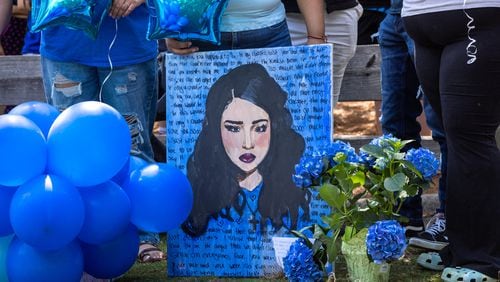As is often the case with investigative reporting, the Doctors & Sex Abuse project in The Atlanta Journal-Constitution grew out of other work. Reporter Danny Robbins was examining orders by the Georgia Composite Medical Board for his 2015 stories on prison medical care. In doing so, he saw orders allowing doctors to continue practicing after a finding that they had sexually violated patients.
His discovery was the beginning of a nationwide investigation that uncovered a broken system that forgives sexually abusive doctors in every state.
Robbins initially compiled information from about 70 Georgia cases clearly involving sexual misconduct with patients. In about two-thirds of those cases, he was shocked to find, doctors either didn’t lose their licenses or were reinstated after being sanctioned. That included doctors who had repeatedly crossed the line with patients.
To see if Georgia was an exception, reporters gathered studies and looked for cases around the country, and the AJC hired a legal researcher to study laws governing medical practices in every state. That work raised questions about the pervasiveness of doctor sexual misconduct. The research, and periodic scrutiny from other news organizations, also suggested that doctors were treated differently from other sexual offenders.
So the AJC decided to examine the system that is supposed to protect patients from predator doctors. At first, we submitted public records requests to medical boards or other regulatory agencies in every state, seeking databases identifying doctors who had been disciplined and the reasons for their sanctions. Nearly all said they didn’t keep such data, and only a few provided other information addressing our requests.
At that point, our data journalism team wrote computer programs to “crawl” regulators’ websites – a process known as scraping – and obtain disciplinary orders. This required building about 50 such programs tailored to agencies across the country. That collected more than 100,000 disciplinary documents. To assist us in identifying those involving sexual misconduct, we then created a computer program based on “machine learning” to analyze each case and, based on keywords, give each a probability rating that it was related to a case of physician sexual misconduct.
We then read all the documents in cases involving over 6,000 physicians to determine the nature of each case and board action. We eliminated cases completed before 1999 and duplicate orders when a doctor was licensed in more than one state.
That work set the stage for additional reporting. Over the past year, the project team sought other records, interviewed victims, doctors, regulators and experts and completed other research.
Learn more about the AJC’s national investigation, Doctors & Sex Abuse, on doctors.ajc.com





